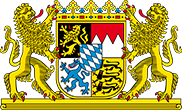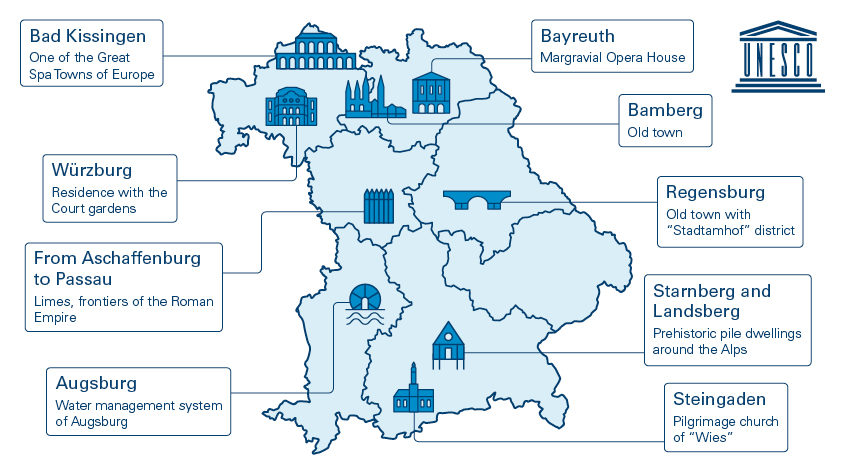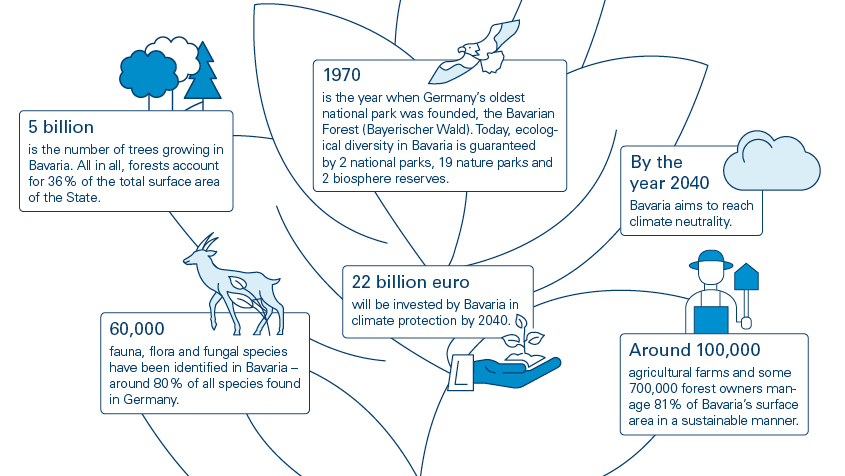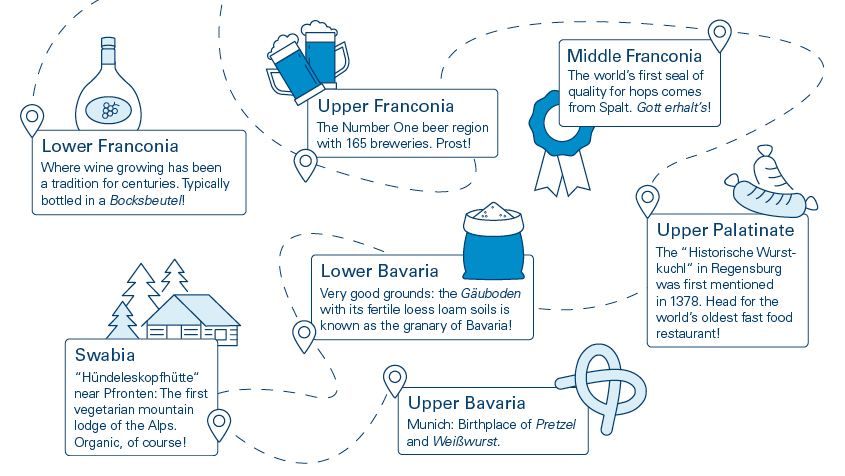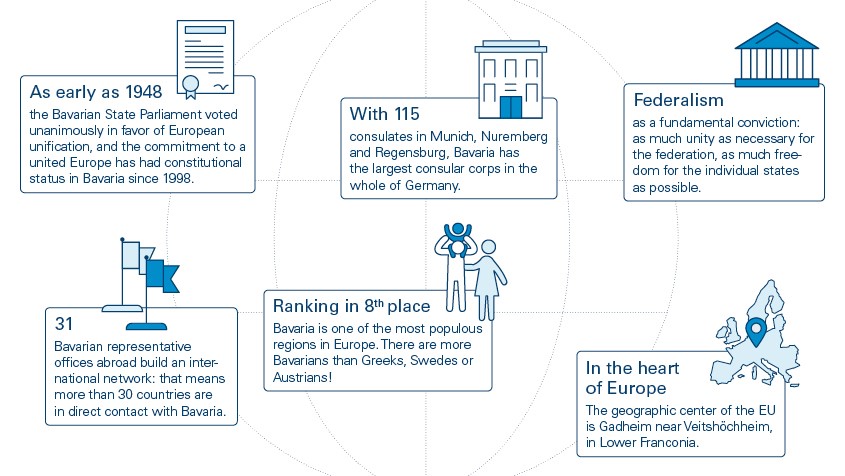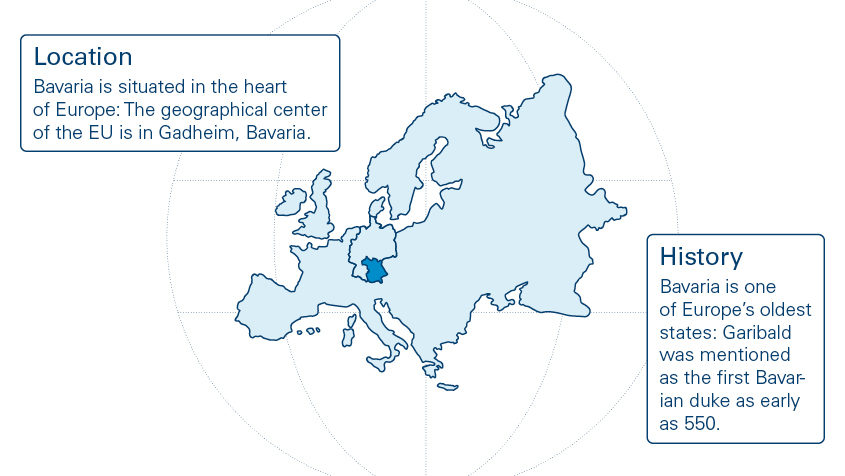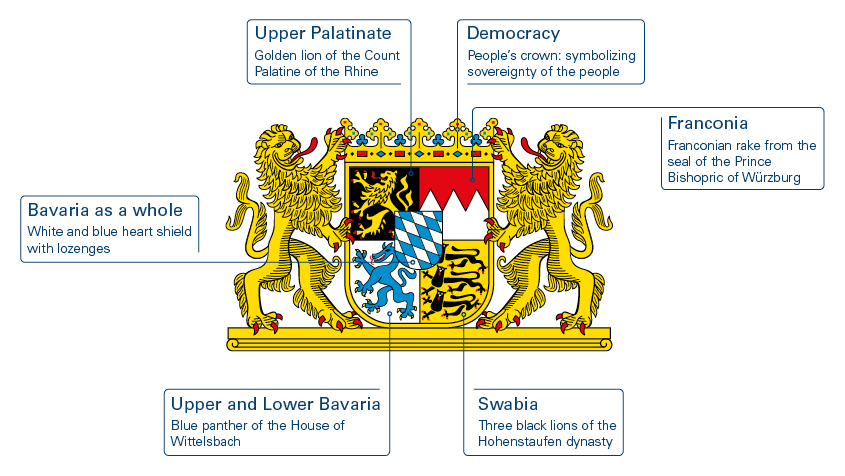
The Free State of Bavaria
Bavaria is the largest state in the Federal Republic of Germany by area. It can look back on a history of more than 1,500 years with one of the oldest parliaments in Europe.
Its coat of arms with the white and blue lozenges is well known all over the world. These diamond shapes have become a symbol for Gemütlichkeit and hospitality, open-mindedness and economic power, for “live and let live“ under a white and blue sky.
The current head of government of the State of Bavaria is Minister-President Dr. Markus Söder, MdL.
He was first sworn in as Bavarian Premier on 16 March 2018 and again on 06 November 2018 and on 31 October 2023. Markus Söder has been a member of the Bavarian State Government since 2007 and has served in various functions.

Bavaria’s history

Bavaria is one of the oldest states in Europe. Its beginnings reach back to the 6th century AD: Garibald I ruled from around 550 as the first Duke of Bavaria to be mentioned by name.
Over the centuries that followed, embedded right in the heart of Europe, Bavaria developed into an important Duchy, first under the Welfs and then, from 1180, under the Wittelsbach dynasty. After the revolution of 1918 Bavaria became a Free State and, after emerging from the dark years of Nazi rule, has enjoyed a successful period of democracy, peace and prosperity.
Links: History
The Bavarian Constitution
The Constitution of the Free State of Bavaria established the independence of the Free State as a constituent part of the Federal Republic of Germany. Drawn up by freely elected Bavarian politicians, the new democratic constitution was adopted by the State Assembly on 26 October 1946. It was also approved by the people of Bavaria when in a referendum 70 percent said YES.
Following adoption by the Council of Ministers of December 4, and upon publication in the Bavarian Gazette of Laws and Ordinances [Bayerisches Gesetz- und Verordnungsblatt), the Bavarian Constitution came into effect on 8 December 1946 under the then-Minister-President Wilhelm Hoegner.
The Free State became a democratic, cultural, social and constitutional state, and in 1949 part of the Federal Republic organised as a federation under Basic Law.
,,Every Bavarian should read this Constitution once, non-Bavarians best twice!,,
Paul Kirchhof, former federal constitutional judge.
The Constitution can only be amended by way of legislation (Art. 75). Resolutions of the Bavarian State Parliament for an amendment of the Constitution must be presented to the people for decision.
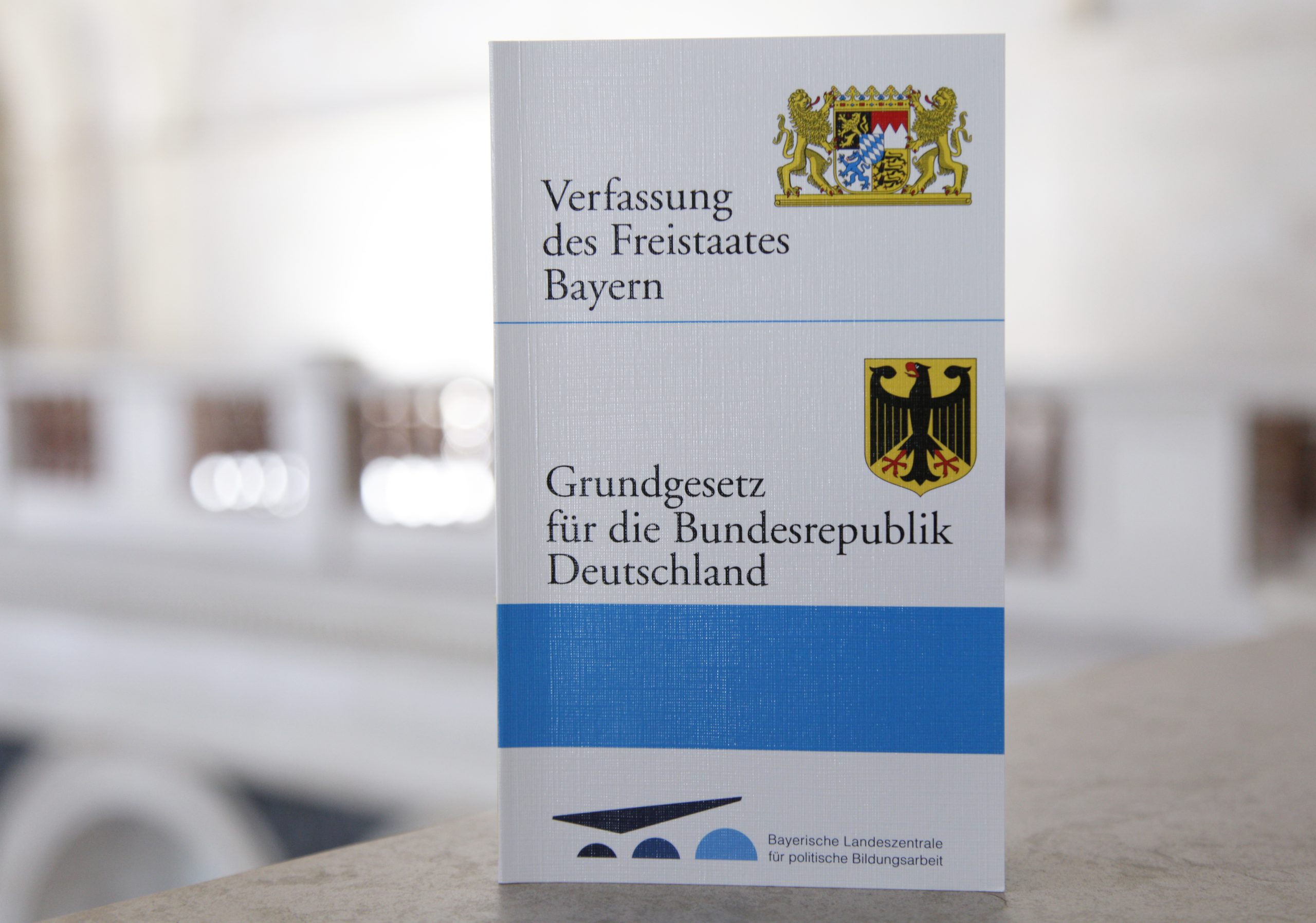
The Bavarian Constitution is divided into four main parts and includes a total of 188 articles. Its first three articles stipulate that Bavaria is a Free State, that all state authority shall emanate from the people and that Bavaria is a cultural and social state governed by the rule of law. It goes on to describe the structure and tasks of the Free State, basic rights and duties, community life as well as economy and work. In addition to parliamentary legislation, it ensures people’s legislation by referendums and plebiscites.
Did you know? The original copy of the Bavarian Constitution, signed by Minister-President Wilhelm Hoegner on 2 December 1946, disappeared without a trace and has not been found to this day.
Dates, facts and figures on Bavaria
The Bavarian border is 2,704 kilometres long and separates the Free State from its seven neighbours: the federal states (Laender) of Baden-Württemberg and Hesse in the west and northwest, Thuringia and Saxony in the north, the Czech Republic in the East as well as Austria and – along Lake Constance – Switzerland in the South.
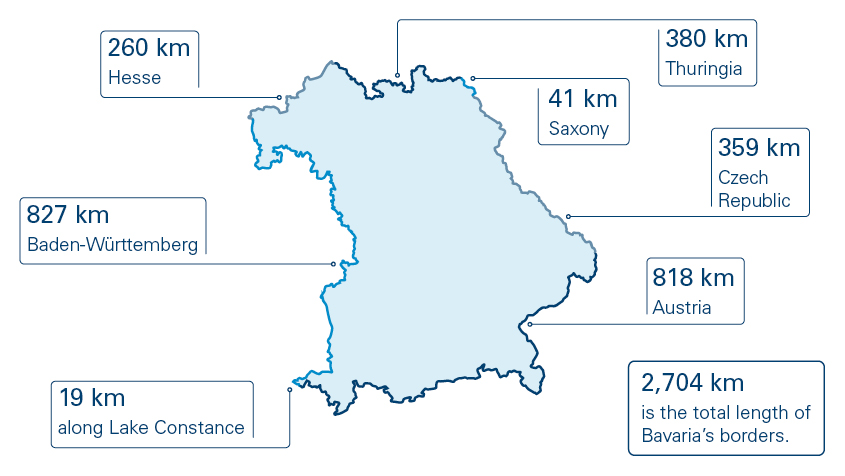
Over 13 million people live on an area of around 70,550 square kilometres. This makes Bavaria the largest state in the Federal Republic of Germany by area.
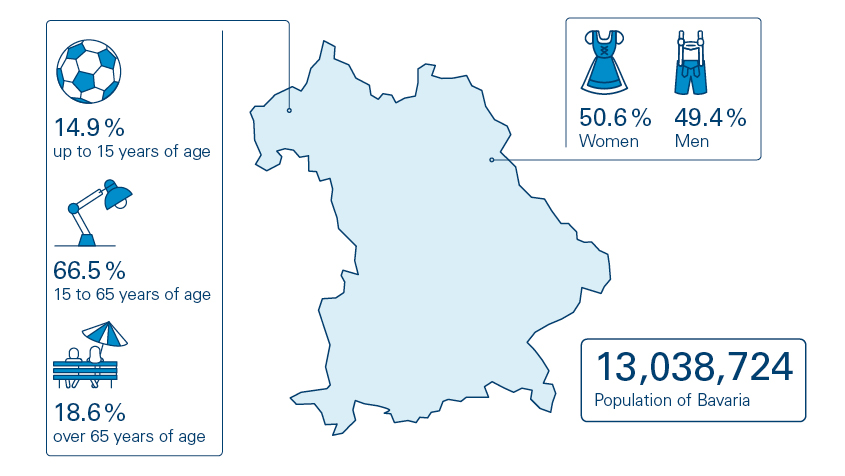
Bavaria is not only known for its mountains, but also for its lakes and water bodies. The State boasts more than 200 natural lakes and 1,880 bodies of surface water each with a surface area of more than three hectares. The largest lake, Chiemsee, covers some 80 square kilometres. Königsee and Walchensee are the two deepest lakes, each reaching depths of 190 metres.
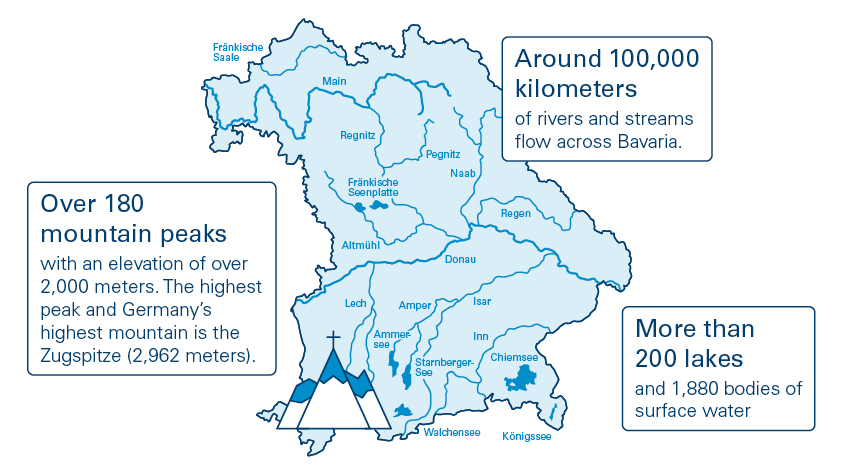
The Bavarian State Parliament [the Landtag]
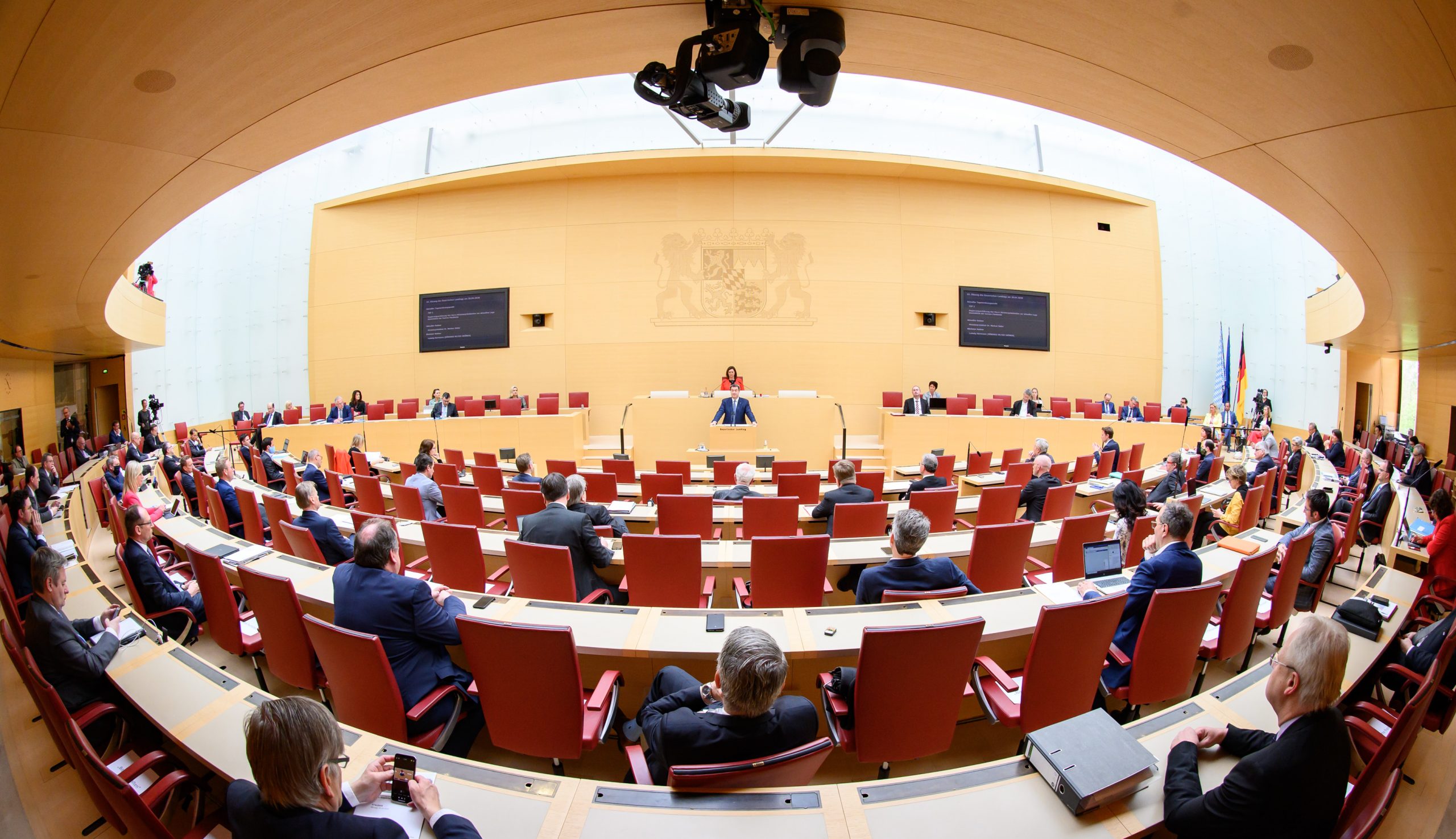
The Bavarian Landtag is the parliament of the Free State of Bavaria. It has four major tasks:
- Formation of the State Government,
- Legislation,
- Control of the State Government,
- Other elective functions and participation in other state bodies.
Did you know? The Landtag is one of the oldest parliaments in Europe.
Ilse Aigner (CSU) is President of the Landtag and is the most senior representative of the Bavarian State Parliament. She is responsible for conducting the business of the State Parliament.
Members of the Bavarian State Parliament are elected for five years. The 19th Bavarian Landtag was elected on 8 October 2023. It comprises 203 elected representatives from five parliamentary groups:
- CSU [Christian Social Union]: 85 deputies (2018: 85),
- FREIE WÄHLER [Free Voters]: 37 deputies (2018: 27),
- AfD [Alternative for Germany]: 32 deputies (2018: 22),
- BÜNDNIS 90/DIE GRÜNEN [Alliance 90/The Greens]: 32 deputies (2018: 38),
- SPD [Social Democratic Party]: 17 deputies (2018: 22).
Did you know? The Maximilianeum in Munich has been the seat of the Bavarian State Parliament since 1949.
The Bavarian State Government

The Bavarian State Government is formed by the Minister-President and currently 17 other persons holding the position of State Minister or State Secretary. They meet regularly as a cabinet to discuss, deliberate and decide on political issues.
In the Cabinet each member is entrusted with a clearly defined sphere of responsibility or special duties that reflect the broad spectrum of political topics covered. According to the Bavarian Constitution, the Bavarian Minister-President determines the number and scope of the fields of responsibility.
The Bavarian Minister-President appoints the members of the State Government with the approval of the Landtag, heads the State Government, determines the general guidelines of government policy and represents Bavaria externally. The Minister-President also carries out numerous representative duties. Since 1945 eleven men have held the office of Minister-President in Bavaria.
Dr. Markus Söder, MdL, has been Bavarian Minister-President since 2018.


The Bavarian State Chancellery
is situated next to Munich’s Hofgarten and accommodates the executive offices of the Minister-President. Cabinet meetings are held here regularly in the Council of Ministers Room.
It is also the official seat of the State Minister for Federal and Media Affairs and of the State Minister for European and International Affairs.
State-Minister Dr. Florian Herrmann has headed the Bavarian State Chancellery since 2018. In addition to media and broadcasting affairs, the Head of the State Chancellery is in charge of coordinating a reduction in red tape across all departments and agencies. He is also in charge of attending to Bavaria’s federal interests, including defense related issues, and serves as primary point of contact for all armed forces stationed in Bavaria.
After serving as Head of the State Chancellery and Minister of State for Federal and European Affairs and Media from 12 November 2018 to 10 January 2021, Dr. Florian Herrmann has been Head of the State Chancellery and State Minister for Federal and Media Affairs since 11 January 2021.

State-Minister Eric Beißwenger has been in charge of Bavaria’s European interests since 2023. He coordinates European policies, fosters Bavaria’s external relations and follows important political processes within the European Union.
Eric Beißwenger has been State Minister for European and International Affairs since 8 November 2023.

Links: Bavarian State Government (in German/English)
State and Local Government Authorities
The Bavarian State Administration
The administration of the State of Bavaria has a three-tier structure. The upper level is formed by theState Ministries. The seven administrative district governments form the middle-level authorities and the lower-level authorities are, for example  the County Chief Executive Offices [Landratsämter].
the County Chief Executive Offices [Landratsämter].
The seven administrative districts in Bavaria are:
- Upper Bavaria,
 Seat of district government: City of Munich, the capital of Bavaria
Seat of district government: City of Munich, the capital of Bavaria - Lower Bavaria,
 Seat of district government: Landshut
Seat of district government: Landshut - Upper Palatinate,
 Seat of district government: Regensburg
Seat of district government: Regensburg - Upper Franconia,
 Seat of district government: Bayreuth
Seat of district government: Bayreuth - Middle Franconia,
 Seat of district government: Ansbach
Seat of district government: Ansbach - Lower Franconia,
 Seat of district government: Würzburg
Seat of district government: Würzburg - Swabia,
 Seat of district government: Augsburg
Seat of district government: Augsburg
Local Government Administration
Local government administration is also divided into three levels. The top level is formed by the administrative districts, followed by the counties, and, at the lowest level, the municipalities.
Local self-administration is one of the basic principles of democracy and is enshrined in the Bavarian Constitution in Articles 10 and 11. The right to self-administration means, above all, that municipalities may perform tasks within their sphere of responsibility independently and on their own responsibility without instructions from higher-level authorities.
Local administration in the State of Bavaria is divided among 2,056 municipalities, market towns and cities, as well as in 71 counties and 7 administrative districts. They are territorial authorities with the right to organise and administer their affairs autonomously. Their most important task is to provide public services for the citizens in their respective area of responsibility. In addition, the Bavarian State can assign further tasks to the local authorities.
The municipalities, market towns and cities organise and administer all local affairs. The counties and administrative districts are responsible for tasks that extend beyond the territory of a municipality or for tasks that the subordinate local administration levels cannot manage on their own. In the Bavarian Constitution, counties and administrative districts are referred to under the term “Gemeindeverbände” (associations of local authorities).
Did you know? What is the difference between a county district (Bezirk) and an administrative district (Regierungsbezirk)? A county district is a local authority that is entitled to self-administration, its own budget and specifically defined tasks. A county district administration is a middle-level authority of the Bavarian State Administration. It pools and coordinates the specific portfolios of the State Ministries at administrative district level. In short: the territorial area of responsibility of a county district and administrative district is the same, but their position and tasks within the state administration are different.
Map of Bavaria: Each of the seven county districts has its own coat of arms.
Independent Institutions of the Free State of Bavaria
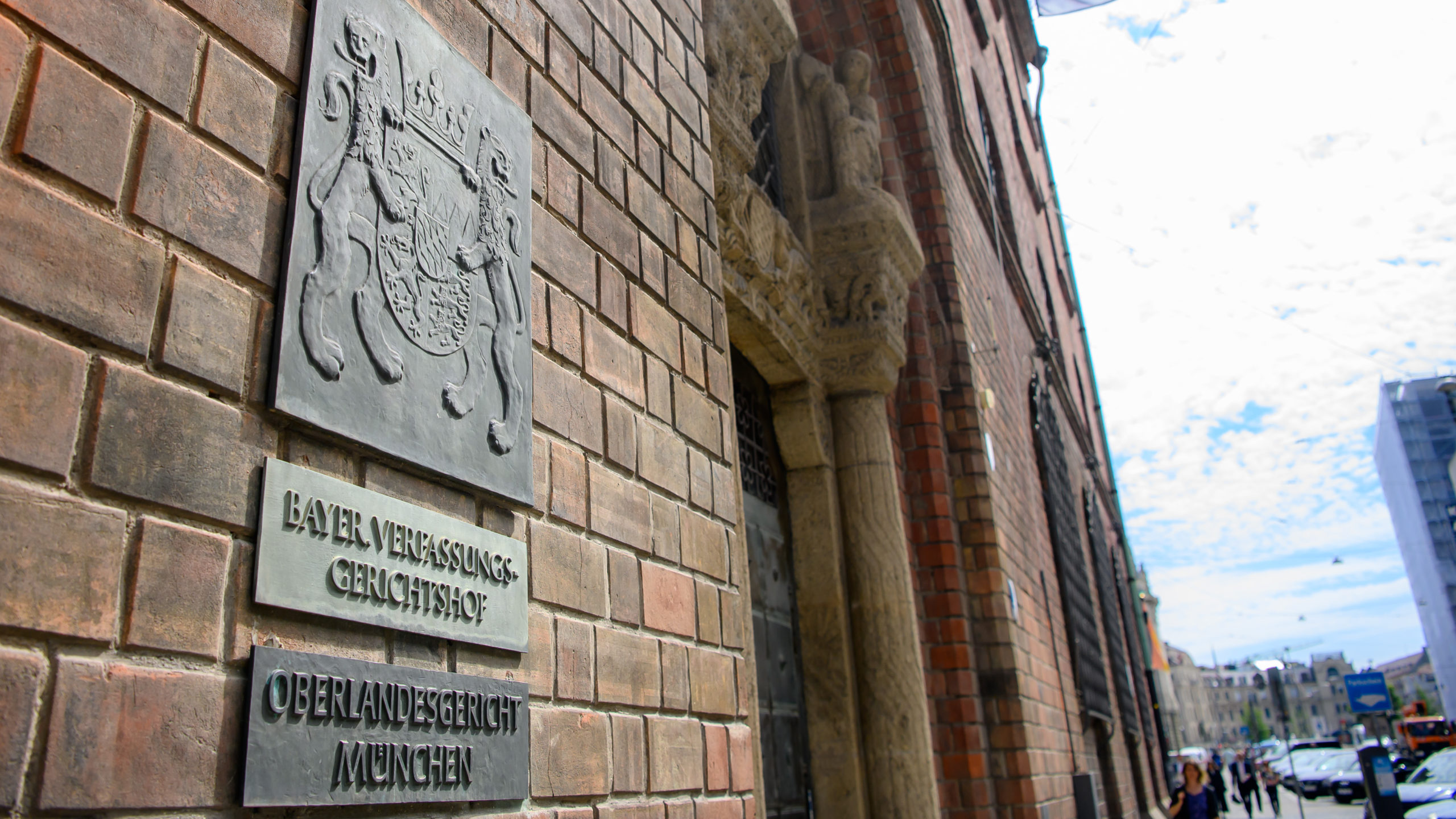
The four independent institutions of Bavaria are not subject to instructions from the Bavarian State Government, but are exclusively bound by the law and the constitution:
Links: State and Local Administrative Bodies
The Bavarian Coat of Arms
There is hardly any other coat of arms that is so well known and popular worldwide as the Bavarian coat of arms. It was introduced on 5 June 1950 by the Law on the coat of arms of the Free State of Bavaria. The symbols depicted are deeply rooted in Bavaria’s history.
,,Bavaria is a free state. The state colours are white and blue. The coat of arms shall be determined by law.,,
Article 1 of the Constitution of the Free State of Bavaria
Heraldic elements of the Greater Bavarian Coat of Arms
The golden lion
Originally, the golden lion in the black quarter was the symbol of the Count Palatine of the Rhine. After the investiture of Ludwig Duke of Bavaria with the Palatinate in 1214, it served for centuries as the common symbol of the old Bavarian and Palatine House of Wittelsbach. Today, the golden Palatine lion edged in red stands for the Upper Palatinate administrative district.
The Franconian rake
The second quarter is halved by red and white (silver) sections with three white triangles pointing upwards. This “rake” appeared around 1350 as the coat of arms of some towns of the Bishopric of Würzburg and has also been depicted in the seals of the prince-bishops since around 1410. Today, the Franconian rake stands for the administrative districts of Upper Franconia, Middle Franconia and Lower Franconia.
The blue panther
The third quarter, bottom left, shows a blue panther rampant, edged in gold on a white (silver) background. Originally it was depicted in the coat of arms of the Count Palatine of Ortenburg, in Lower Bavaria, in the 12th century. Later, it was adopted by the House of Wittelsbach. Today, the blue panther represents the old Bavarian administrative districts of Lower Bavaria and Upper Bavaria.
The three black lions
The fourth quarter depicts three black lions couchant, edged in red, one above the other on a gold background. Their heads are turned towards the observer. They are taken from the old coat of arms of the Hohenstaufen dynasty, the former dukes of Swabia. In the Bavarian coat of arms, these three lions represent the administrative district of Swabia.
The white and blue central shield
The heart shield features white (silver) and blue lozenges slanting to the right. Since 1204 the coat of arms of the Counts of Bogen, this heart shield was adopted as the coat of arms of the House of Wittelsbach in 1247. The white and blue lozenges are today regarded as a symbol of Bavaria as a whole. Together with the People’s Crown it is also officially used as the Lesser Coat of Arms of Bavaria.
The people’s crown
The four coat fields with the heart shield in the centre are crowned by a golden band with precious stones decorated with five ornamental leaves. The people’s crown, that appeared in the coat of arms for the first time in 1923, symbolises the sovereignty of the people after the abolition of the royal crown.
Did you know? Historians believe that the lozenge pattern came from bars of iron. These reinforced the knights’ shields that were decorated with coats of arms during tournaments and in battle. However, it is still not known why the lozenges are white and blue.
Flags
State symbols are sovereign emblems of the Free Sate of Bavaria. In addition to the greater and lesser versions of the Bavarian coat of arms, these also include the striped and lozenge flag. Both flags are of equal status.

The lozenge flag depicts a minimum of 21 blue and white lozenges, wherein the truncated lozenges are counted as well. If the flag is long and thin, the number of lozenges may be increased. The heraldic first lozenge in the right upper corner of the flag – top left corner (adjacent to flagpole) for the viewer – is always an incomplete, cut white lozenge. The striped flag has two equally wide horizontal stripes in the Bavarian colours: the white stripe being on top, the blue stripe on the bottom.
Note: Neither the striped flag nor the lozenge flag depict the Bavarian coat of arms.
Anthem
The hymn “Für Bayern“ (For Bavaria) was already widely known in the second half of the 19th century before it was made the official anthem of the State of Bavaria by initiatives of the Bavarian Parliament.

The author of the original version was the Munich teacher Michael Öchsner, who was publisher of the first periodical of the Bavarian Teacher’s Association. The composer was Konrad Max Kunz, professor at the Munich Conservatory (now the Academy of Music), choir director in the Royal Opera (today State Opera) and member of the Bavarian Chorale Society. Öchsner and Kunz worked together in the old Munich Bürger-Sänger-Zunft (Citizens’ Singers’ Guild) to which they dedicated the hymn “Für Bayern“ in 1860. It quickly became popular in other clubs and associations in which Öchsner, Kunz and their singer friends were active, such as the gymnastic clubs founded after 1860, the Bavarian Teacher’s association, shooting clubs and the Bavarian Singers’ Society.
When the national anthem of the Weimar Republic was designated as the anthem of the Federal Republic of Germany in 1952, the Bavarian Landtag unanimously decided that the German national anthem and the hymn “For Bavaria” should be taught in schools and jointly played by the Bavarian Broadcasting station. The Bavarian State Government of that time, which was a grand coalition of the Christian Social Union CSU and the Social Democratic Party SPD, adopted the corresponding resolution of the Landtag on 3 March 1953. As the responsible ministry of the Interior advised against statutory regulation of the anthem issue in 1964, it was finally settled by an announcement published by the Minister-President. Since 1964 the “Bayernlied”, has been officially designated as “anthem” and is officially played at state events as the “Bavarian Anthem”.
Did you know? The “Bayernlied” enjoys special protection: under Section 90a of the German Penal Code (Strafgesetzbuchs (StGB)) it is prohibited to denigrate the Bavarian Anthem.
Wenn Sie die Youtube-Videos auf www.bayern.de einblenden, werden Daten automatisiert an Youtube übermittelt. Der Schalter ist blau. Auf Art und Umfang der übertragenen Daten hat das Landesportal keinen Einfluss. Mit Klick auf den Schalter können Sie die Video-Einblendung jederzeit deaktivieren. Der Schalter ist grau. Zum Datenschutz
Alle Videos mit Datenübertragung an Youtube aktivieren:



Welcome dahoam
The Free State of Bavaria: Land in the heart of Europe
If you ask a guest from abroad what they consider to be typical of Bavaria, their answer will most likely revolve around lederhosen and dirndl dresses, as well as beer and knuckle of pork. But there is a lot more to “typically Bavarian”.

More than 13 million people live in Bavaria. People from the regions of Altbayern (Old Bavaria), Franconia, Swabia and Sudeten Germans have made Bavaria the charming home state that it is, and have also turned it into a location with the best of opportunities. It is a great place to live and to work.
Bavaria is changing all the time, but always keeps its typical white-and-blue lifestyle: live and let live! Valuing diversity is the essence of the proverbial “liberalitas bavariae“: Cosmopolitan. Fit for the future. One of a kind.

